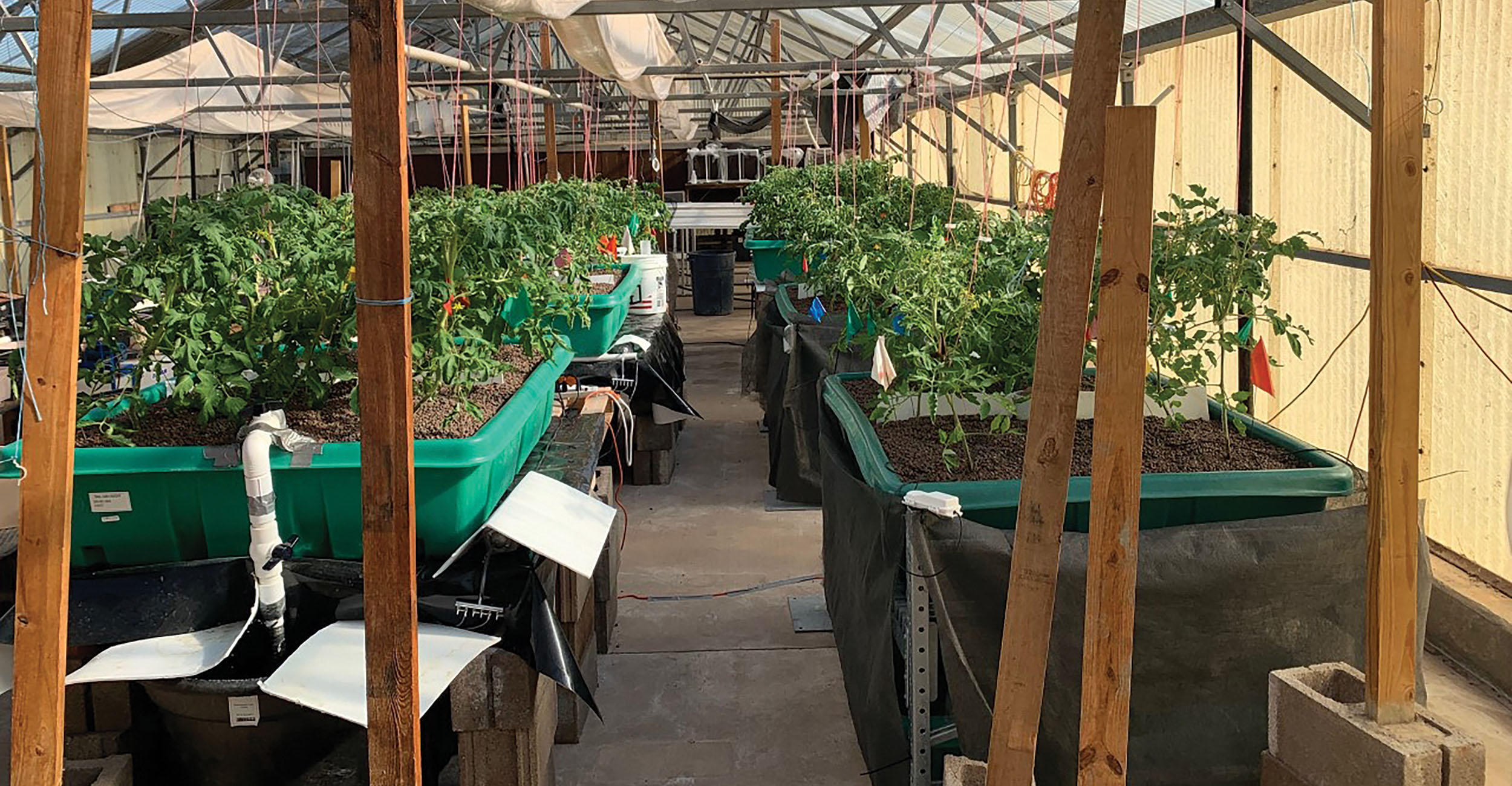
Grafting A Better Tomato
Friday, May 27, 2022
Media Contact: Jami Mattox | Agricultural Communications Services | 405-744-8061 | jami.mattox@okstate.edu
How do you like your tomatoes? Oklahoma State University horticulture master’s students prefer their tomatoes flavorful, abundant and grown without soil.
“We are using plant materials from different varieties of tomatoes and combining their tissues to promote beneficial traits such as yield and quality,” said Che Deer, graduate research assistant and master’s student in the OSU Department of Horticulture and Landscape Architecture.
“The project has two components,” he said. “The propagation component will allow us to see if the plants survive in both spring and fall.
“The production component will allow us to see to see if grafting has an effect compounded with the soilless system.”
Deer grafted the seedling plants by hand-cutting sections from Cherokee Purple tomato plants and connecting them to Maxifort tomato rootstocks to achieve select traits, said Bruce Dunn, horticulture and landscape architecture professor.
“The heirloom varieties of tomatoes do not produce a lot of fruit, however, they have good taste,” Dunn said. “You can graft one of those heirlooms onto a vigorous plant to see if it will produce more fruit than a normal plant.”
When grafting plants, the genetics must match the needed improvement to get the best possible outcome, Dunn said. This innovative research is the first project growing grafted plants in an aquaponics system in Oklahoma, Deer said.
Aquaponics is a small ecosystem where fish, plants and bacteria live together in a symbiotic relationship. The fish produce nutrients for the plants, and in turn, the plants contribute to the water cleaning cycle for fish health, Deer said.
Symbiotic Aquaponic donated three identical systems to contribute to Deer’s grafted vegetable propagation and production in aquaponics research after he interned with the company, he said. The systems are housed at the OSU Greenhouse Learning Center.
“When using grafted plants with aquaponics, we found tomatoes were successful in terms of size and health of the plants,” Deer said. “However, the effect of grafting itself had an effect on increasing yield.”
After finding a hearty plant, the project needed a complementary fish species. The researchers chose Coppernose Bluegill. They are an easy-to-manage, durable breed and maintain nitrates to help with tomato growth, Deer said.
These three systems have only been at OSU for a year and a half.
“As the systems mature, they become more productive because of biofilter establishment,” Deer said.
The grafted tomatoes benefit the fish by maintaining a comfortable balance of nitrogen, Deer said.
Nutrient-rich fish waste in the water cycles through the system to the tomatoes. The plants absorb the nutrients and clean water returns to the fish.
“We are taking a sustainable practice and combining it with all of these other components,” Deer said. “The recirculation of water, fish waste being used as a nutrient source, and healthier plants are just part of the benefits of using aquaponics.”
In addition to the sustainable assets, aquaponics also can provide commercial benefits.
“Another idea behind aquaponics is the two or more products that could potentially be sold — the fish waste, the fish themselves, or the plants being grown,” Dunn said.
Another advantage of aquaponics is the ability to use alternatives to fertilizer, Deer said.
Fertilizers like rock phosphorus are directly correlated to the fossil fuel industry, so whenever fossil fuels are no longer an option, most fertilizers will become unavailable, Deer said. Instead, with aquaponics, fish bacteria and nitrogen are used as nutrients for the tomatoes, he added.
“Practicing aquaponics is the future,” Deer said. “In 20 to 50 years, we do not know what finite resources we will have left.”
Using aquaponics gives students unique experiences for the future to benefit not only themselves but also the horticulture community by creating a knowledge base to use when nonrenewable resources run out, said Holly Dobbs, director of greenhouse operations for the Greenhouse Learning Center.
“To be one of the few colleges that is up to date on the new technology being used is a great selling point for our school,” Dobbs said. “We have hardworking, intelligent students who are interested in the future.”
By using this soilless system, the students have created knowledge for themselves and their futures, while also giving future graduate students the opportunity to explore new ways of growing grafted plants, Dobbs said.
“Aquaponics with grafted plants is just now coming into the spotlight of finding more organic ways to grow produce,” Dobbs said. “It’s fascinating that our aquaponics system is so self-sustained.”
Both grafted plants and aquaponics offer new research opportunities and open doors for other ideas, Dobbs said.
“As our system here at OSU matures, I am excited to see what brilliant students will achieve next with it,” Dobbs said. “I truly see a soilless system with grafted plants as the future and know the best is yet to come with this program.”
Story By: Blair Cupps | Cowboy Journal
